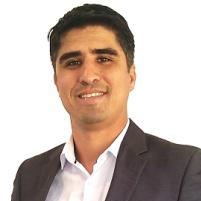Sustainable Water Use
A special issue of Sustainability (ISSN 2071-1050). This special issue belongs to the section "Social Ecology and Sustainability".
Deadline for manuscript submissions: closed (26 March 2023) | Viewed by 19666
Special Issue Editor
Special Issue Information
Dear Colleagues,
This Special Issue on Sustainable Water Use addresses the nexus of water use as an enabler for the sustainability of environmental, social and economic systems. Cutting-edge meta-analyses, critical reviews, frameworks, case studies, modelling and empirical evaluations are invited for this Special Issue, which will include international and cross-disciplinary studies on sustainable water use. From an environmental perspective, the issue will focus on studies which further the academic knowledge and industry practices (e.g. emerging technologies, strategic frameworks, monitoring and design tools, etc.) to improve the environmental performance of the water and wastewater sectors, as well as water end use sectors. Environmental analyses may include, but are not limited to, water end use efficiency, water pollution control, water-energy-carbon nexus, water for energy and energy for water generation, water-related environmental services, chemical and biological environmental indicators, etc. Studies on the social-economic aspects of sustainable water use may include, but are not limited to, water governance, integrated water management frameworks, urban water infrastructure synergies, project management approaches for sustainable water projects, water-based strategic land use planning, demand side management strategies, water price instruments, water for economic prosperity, water–energy–food nexus, water supply and stormwater modelling and planning, alternative water supply, alternative wastewater treatment, water demand for hydrogen production as an energy carrier, circular economy of water and wastewater systems, urban water lifecycle analyses, water end use studies, waterways access for social livability, waterways importance for urban economy, coastal hazard adaptation strategies, climate change-related water crises, etc. The selected peer-reviewed studies in this Special Issue will provide cutting-edge insights into the current and future trends of approaches to use water in a sustainable manner, as well as indicate unsustainable water use patterns and risks. Ultimately, the Special Issue will provide a holistic view of the importance of sustainable water use to maintain thriving environmental, economic and social systems concomitantly.
Dr. Abel Silva Vieira
Guest Editor
Manuscript Submission Information
Manuscripts should be submitted online at www.mdpi.com by registering and logging in to this website. Once you are registered, click here to go to the submission form. Manuscripts can be submitted until the deadline. All submissions that pass pre-check are peer-reviewed. Accepted papers will be published continuously in the journal (as soon as accepted) and will be listed together on the special issue website. Research articles, review articles as well as short communications are invited. For planned papers, a title and short abstract (about 100 words) can be sent to the Editorial Office for announcement on this website.
Submitted manuscripts should not have been published previously, nor be under consideration for publication elsewhere (except conference proceedings papers). All manuscripts are thoroughly refereed through a single-blind peer-review process. A guide for authors and other relevant information for submission of manuscripts is available on the Instructions for Authors page. Sustainability is an international peer-reviewed open access semimonthly journal published by MDPI.
Please visit the Instructions for Authors page before submitting a manuscript. The Article Processing Charge (APC) for publication in this open access journal is 2400 CHF (Swiss Francs). Submitted papers should be well formatted and use good English. Authors may use MDPI's English editing service prior to publication or during author revisions.
Keywords
- sustainable water use
- water resources management
- water–energy–climate–food nexus
- emerging water technologies
- strategic water governance frameworks
- monitoring and design tools





